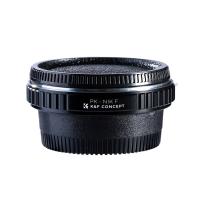What Changes The Magnification On A Microscope ?
The magnification on a microscope is changed by adjusting the objective lenses. Microscopes typically have multiple objective lenses with different magnification powers, such as 4x, 10x, 40x, and 100x. By rotating the nosepiece to switch between these lenses, the magnification of the microscope can be changed. Additionally, some microscopes may have a zoom feature that allows for continuous adjustment of the magnification.
1、 Objective lens selection
What changes the magnification on a microscope is the selection of the objective lens. The objective lens is the primary lens in a microscope that is responsible for gathering light and magnifying the specimen. Microscopes typically have multiple objective lenses with different magnification powers, allowing users to choose the level of magnification required for their specific needs.
Objective lenses are usually labeled with their magnification power, such as 4x, 10x, 40x, or 100x. The magnification power of an objective lens refers to how many times larger the specimen appears when viewed through the lens compared to the naked eye. For example, a 10x objective lens will make the specimen appear 10 times larger.
To change the magnification on a microscope, the user simply needs to rotate the nosepiece or turret that holds the objective lenses and select the desired lens. The selected objective lens will then be positioned directly above the specimen, allowing for the desired level of magnification.
It is important to note that the total magnification of a microscope is determined by multiplying the magnification of the objective lens by the magnification of the eyepiece. For example, if a 10x objective lens is used in combination with a 10x eyepiece, the total magnification would be 100x.
In recent years, advancements in microscope technology have led to the development of high-powered objective lenses with even greater magnification capabilities. These lenses, often referred to as oil immersion lenses, require the use of a special oil between the lens and the specimen to achieve optimal image quality. Additionally, digital microscopes have become increasingly popular, allowing for easy adjustment of magnification through software controls.

2、 Adjusting the eyepiece
What changes the magnification on a microscope is primarily adjusting the objective lenses. The objective lenses are the ones located on the revolving nosepiece of the microscope. They come in different magnification powers, typically ranging from 4x to 100x or higher. By rotating the nosepiece and selecting a different objective lens, the magnification of the microscope can be changed.
Each objective lens has a specific magnification power engraved on it, such as 4x, 10x, 40x, or 100x. When a different objective lens is selected, it moves closer or farther away from the specimen, altering the magnification. The higher the magnification power of the objective lens, the closer it needs to be to the specimen to achieve a clear image.
In addition to adjusting the objective lenses, the eyepiece can also contribute to the overall magnification. The eyepiece, or ocular lens, is the lens that you look through to view the specimen. It typically has a magnification power of 10x. By changing the eyepiece, the overall magnification can be further increased or decreased.
It is important to note that the total magnification of a microscope is calculated by multiplying the magnification of the objective lens by the magnification of the eyepiece. For example, if the objective lens is 40x and the eyepiece is 10x, the total magnification would be 400x.
In recent years, advancements in microscope technology have led to the development of digital microscopes. These microscopes use a camera and computer software to capture and display images. With digital microscopes, the magnification can be adjusted electronically through the software, providing more flexibility and precision in magnification changes.

3、 Changing the tube length
Changing the tube length is one of the factors that can affect the magnification on a microscope. The tube length refers to the distance between the objective lens and the eyepiece. By adjusting this distance, the magnification can be altered.
In a compound microscope, the magnification is determined by the combination of the objective lens and the eyepiece. The objective lens is responsible for gathering light and forming the initial magnified image, while the eyepiece further magnifies this image for the viewer. The total magnification is calculated by multiplying the magnification of the objective lens by the magnification of the eyepiece.
When the tube length is changed, it affects the distance between the objective lens and the eyepiece, thus altering the overall magnification. By increasing the tube length, the magnification is increased, and by decreasing the tube length, the magnification is decreased.
However, it is important to note that changing the tube length alone does not solely determine the magnification. The magnification is also influenced by the focal length of the lenses used, the numerical aperture of the objective lens, and the design of the microscope itself. These factors work together to determine the overall magnification and resolution of the microscope.
In recent years, advancements in microscope technology have led to the development of digital microscopes. These microscopes use digital imaging sensors and software to capture and display images. In such microscopes, the magnification can be adjusted digitally, without physically changing the tube length. This allows for more precise and convenient magnification adjustments.
In conclusion, while changing the tube length is one factor that can affect the magnification on a microscope, it is important to consider other factors such as lens design and numerical aperture. Additionally, with the advent of digital microscopes, magnification adjustments can now be made digitally, providing more flexibility and convenience.

4、 Using different magnification settings on a zoom microscope
What changes the magnification on a microscope is the combination of lenses used in the optical system. A microscope typically consists of an objective lens and an eyepiece lens. The objective lens is responsible for gathering light from the specimen and forming a magnified image, while the eyepiece lens further magnifies this image for the observer.
The magnification power of a microscope is determined by the focal lengths of these lenses. The objective lens has a fixed focal length, and different objective lenses with varying focal lengths can be interchanged to achieve different magnification levels. The eyepiece lens also has a fixed focal length, which further magnifies the image produced by the objective lens.
In addition to the lenses, some microscopes have a zoom feature that allows for continuous magnification adjustment. This is achieved by using a combination of lenses that can be adjusted to change the overall magnification. By adjusting the position of these lenses, the user can increase or decrease the magnification level as desired.
It is important to note that the maximum achievable magnification of a microscope is limited by the numerical aperture of the objective lens and the wavelength of light being used. Beyond a certain point, increasing the magnification may result in a loss of image quality and resolution.
In recent years, advancements in technology have led to the development of digital microscopes that utilize cameras and software to achieve magnification. These microscopes allow for even greater flexibility in adjusting magnification levels and offer additional features such as image capture and analysis.
Overall, the magnification on a microscope is primarily determined by the combination of lenses used, whether it is through interchangeable objective lenses or a zoom feature.




























There are no comments for this blog.